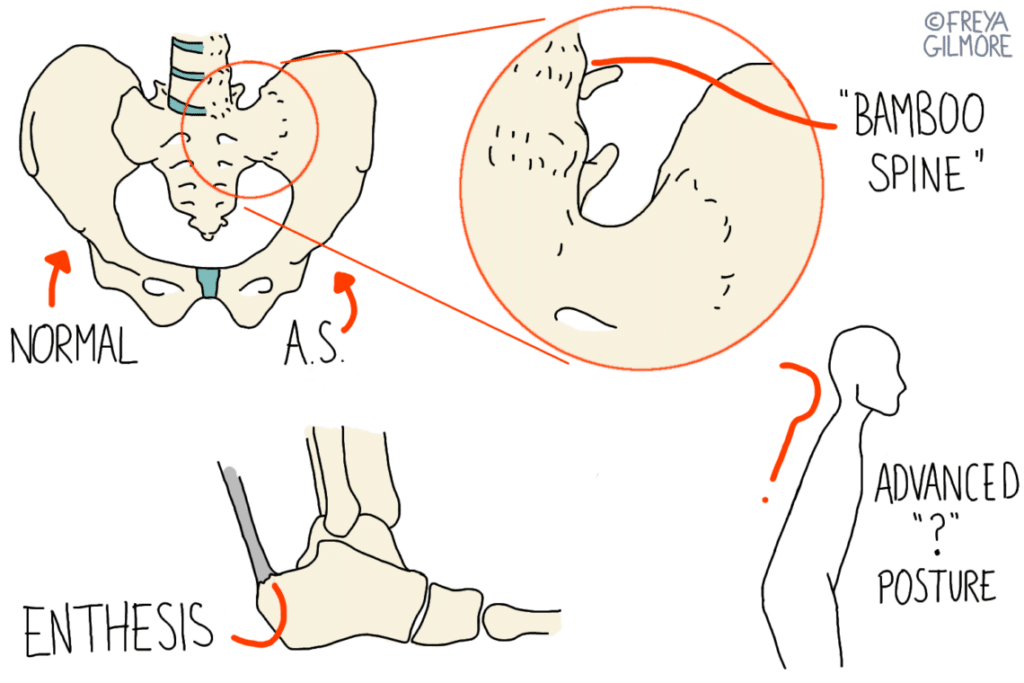

Ankylosing Spondylitis is a rheumatological condition related to rheumatoid arthritis and inflammatory bowel disease. Like these conditions, it is autoimmune: meaning the body is attacking its own cells.

Initially, AS may seem like basic lower back pain. You may be inclined to ignore it and wait for it to go away. Symptoms may come and go in the early stages, but they will slowly progress. This is because after periods of inflammation, the body heals incorrectly, growing new bone over the joints in the lower back and pelvis. This is what the “ankylosing” refers to: it means fused or anchored. Along with the lower back pain and stiffness, symptoms can be quite wide reaching:
We might suspect AS or another rheumatoid condition if you have inflammatory back pain and:
Recently a lot of information about AS has arisen. Previously we thought that AS affected men more than women, but we know now that it just affects them differently. It seems to affect both sexes equally. We also thought that the “question mark posture” with the flattened lower back was a good diagnostic point. Now we know that it is a sign of extensive fusion. These important points make spotting AS earlier possible.
We also have new ideas for treating patients with AS. Whereas with other patients we may see stiffness or over-compensation in the upper back and manipulate it, this is inappropriate in AS patients. The upper back is not unaffected by the process of AS, and these bones are more prone to injury from strong techniques than in the general population.
Early stage AS is technically called AxSpA (Axial Spondyloarthritis). This is when we want a diagnosis because intervention here is most effective. Diagnosis needs to be made by a rheumatologist, although we can refer back to the GP if we suspect AxSpA/AS. Investigation may include blood tests and MRI. For best results in managing the condition, medication may be appropriate. Some stronger medications also have to be prescribed by the rheumatologist, so early referral to the specialist is ideal.
Osteopaths cannot cure AS, but we may be able to help you manage symptoms. Inflammatory conditions like this are aggravated by rest or excessive activity, so treatment and advice are about striking a balance. On a bad day with AxSpA, you may find relief in a few minutes of gentle treatment. With later stage AS, you may benefit from work to the muscles around affected joints, and mobilisation of joints that are compensating for the fusions.
Book now if you suspect your back pain might be Ankylosing Spondylitis/AxSpA